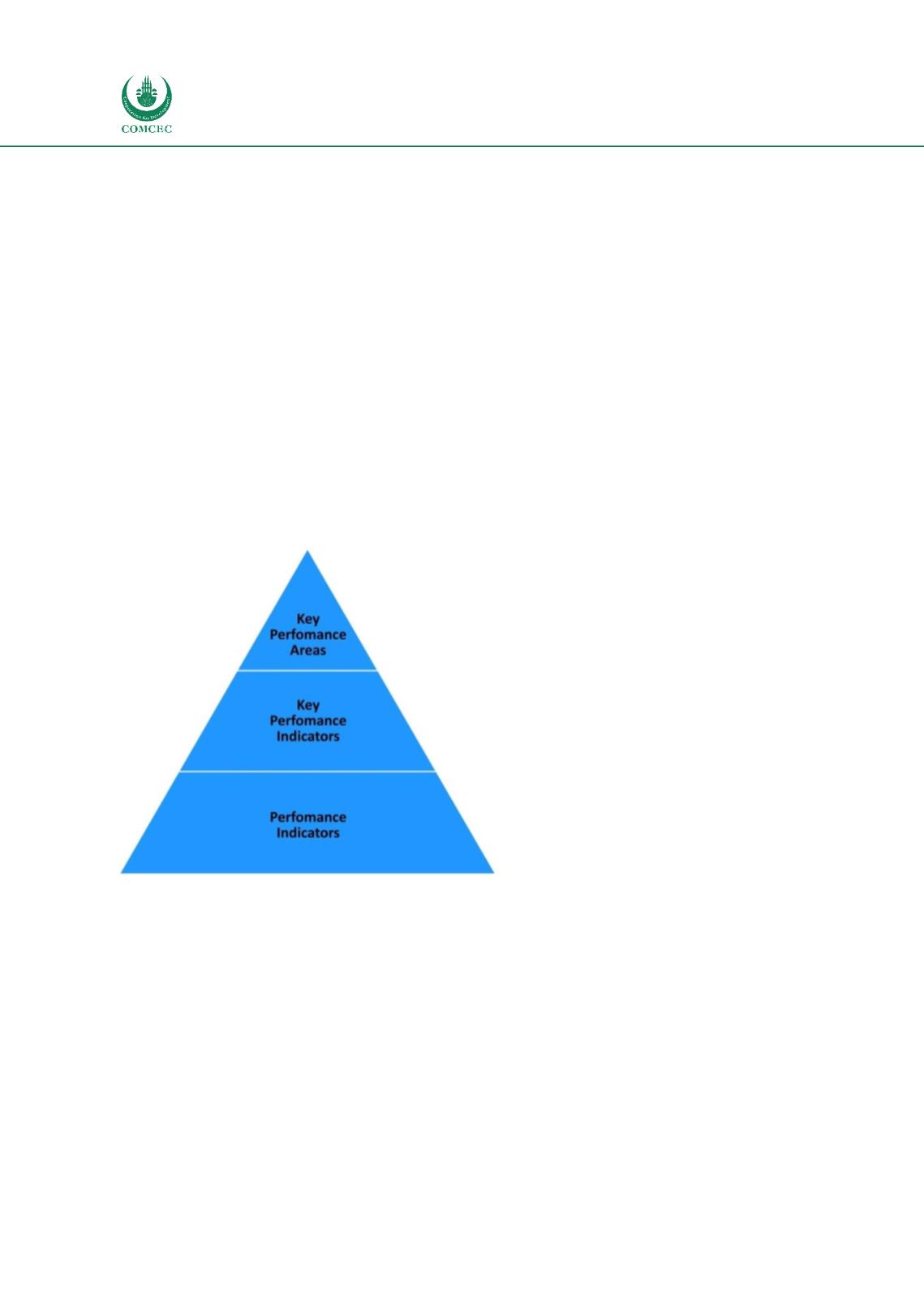

Facilitating Trade:
Improving Customs Risk Management Systems
In the OIC Member States
210
7.4
ANNEX IV
7.4.1
Monitoring and Review Tools
Key Performance Areas - KPAs
are areas for business success factors and improved performance
of an organization, in this case, Customs in general and CRM. A KPA can be assessed by assessing
one or more concrete KPIs related to a specific area. This hierarchy enables a transparent and
aggregated view of a large number of KPIs especially for customs, with complex structures and
heterogeneous business processes. For CAs strategic organization
’
s planning, the first step is to
define goal areas and success factors on KPA level. Afterward, goals and factors can be defined
and refined by different KPIs. The KPA can be using selectivity/targeting approach based on
automated compliance measurement and risk-assessment and profiling systems, to target
suspect consignments and minimize the incidence of physical examinations. The measurement
methodology will verify that the risk assessment system is working and is based on assessment
and profiling, for at least some of the import or export operations. The existence of an approved
annual audit plan based on a risk-assessment system, and its subsequent implementation should
be verified. A good practice should be the quality of feedback provided by the evaluation of the
risk management system over the profiling system performance.
Figure 65: Three levels of performance measurement represented as a pyramid
Source: KPI Institute
Key Performance Indicators - KPIs
are quantitative or qualitative measurements which should
reflect the business success factors and strategic performance of the CRM. For the CRM, the KPIs
are qualitative, which one may not necessarily measure with a quantitative measurement (e.g.,
risk analysis performances). Customs operations involve different customs procedures such as
import, export, inward transit processing, etc. Many customs administrations start with the
implementation of CRM with one procedure and then continue to expand to other procedures.
A KPI that will show the efficiency of the implementation of CRM can be % of customs
procedures with implemented risk assessment that can be measured by dividing the number of
customs procedures with risk assessments. This KPI is related to previously described KPA.
Performance Indicators
-
Often more than one KPI is related to the same success factor -
Performance Indicators (PI). In this way, different areas of interest can be evaluated to achieve
















